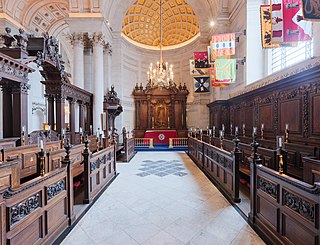| Branoslavci | |
|---|---|
| Coordinates: 46°31′29.06″N16°7′32.91″E / 46.5247389°N 16.1258083°E Coordinates: 46°31′29.06″N16°7′32.91″E / 46.5247389°N 16.1258083°E | |
| Country | |
| Traditional region | Styria |
| Statistical region | Mura |
| Municipality | Ljutomer |
| Area | |
| • Total | 2.19 km2 (0.85 sq mi) |
| Elevation | 184.9 m (606.6 ft) |
| Population (2002) | |
| • Total | 163 |
| [1] | |
Branoslavci (pronounced [ˈbɾaːnɔslau̯tsi] ) is a village in the Municipality of Ljutomer in northeastern Slovenia. The area traditionally belonged to the Styria region and is now included in the Mura Statistical Region. [2]

A village is a clustered human settlement or community, larger than a hamlet but smaller than a town, with a population ranging from a few hundred to a few thousand. Though villages are often located in rural areas, the term urban village is also applied to certain urban neighborhoods. Villages are normally permanent, with fixed dwellings; however, transient villages can occur. Further, the dwellings of a village are fairly close to one another, not scattered broadly over the landscape, as a dispersed settlement.

The Municipality of Ljutomer is a municipality in northeastern Slovenia, some 40 kilometers (25 mi) east of Maribor. Traditionally it was part of the region of Styria. It is now included in the Mura Statistical Region. Its largest settlement and the administrative center is Ljutomer.

Slovenia, officially the Republic of Slovenia, is a sovereign state located in southern Central Europe at a crossroads of important European cultural and trade routes. It is bordered by Italy to the west, Austria to the north, Hungary to the northeast, Croatia to the southeast, and the Adriatic Sea to the southwest. It covers 20,273 square kilometers (7,827 sq mi) and has a population of 2.07 million. One of the successor states of the former Yugoslavia, Slovenia is a parliamentary republic and a member of the United Nations, of the European Union, and of NATO. The capital and largest city is Ljubljana.
There is a small Neo-Gothic chapel in the centre of the village. It was built in the late 19th century. [3]

Gothic Revival is an architectural movement popular in the Western World that began in the late 1740s in England. Its popularity grew rapidly in the early 19th century, when increasingly serious and learned admirers of neo-Gothic styles sought to revive medieval Gothic architecture, in contrast to the neoclassical styles prevalent at the time. Gothic Revival draws features from the original Gothic style, including decorative patterns, finials, lancet windows, hood moulds and label stops.

The term chapel usually refers to a Christian place of prayer and worship that is attached to a larger, often nonreligious institution or that is considered an extension of a primary religious institution. It may be part of a larger structure or complex, such as a college, hospital, palace, prison, funeral home, church, synagogue or mosque, located on board a military or commercial ship, or it may be an entirely free-standing building, sometimes with its own grounds. Chapel has also referred to independent or nonconformist places of worship in Great Britain—outside the established church.
In the south of the settlement is a large mansion known as Branek Castle (Slovene : Grad Branek). The surviving building is a two-storey early 20th-century adaptation after a major fire in 1925 of what was a 16th-century castle, which had in turn developed on the site of a tower of an early Slavic defence enclosure. [4]

A mansion is a large dwelling house. The word itself derives through Old French from the Latin word mansio "dwelling", an abstract noun derived from the verb manere "to dwell". The English word manse originally defined a property large enough for the parish priest to maintain himself, but a mansion is no longer self-sustaining in this way. Manor comes from the same root—territorial holdings granted to a lord who would "remain" there—hence it is easy to see how the word mansion got its meaning.

Slovene or Slovenian belongs to the group of South Slavic languages. It is spoken by approximately 2.5 million speakers worldwide, the majority of whom live in Slovenia. It is the first language of about 2.1 million Slovenian people and is one of the 24 official and working languages of the European Union.

The early Slavs were a diverse group of tribal societies who lived during the Migration Period and Early Middle Ages in Eastern Europe and established the foundations for the Slavic nations through the Slavic states of the High Middle Ages. The first written use of the name "Slavs" dates to the 6th century, when the Slavic tribes inhabited a large portion of Central and Eastern Europe. By that century, nomadic Iranian ethnic groups living on the Eurasian Steppe had been absorbed by the region's Slavic population. Over the next two centuries, the Slavs expanded southwest toward the Balkans and the Alps and northeast towards the Volga River. It's still a matter of controversy where the original habitat of the Slavs was, but scholars believe it was somewhere in Eastern Europe. In the past not much attention was paid to the origin of the Slavic people.





